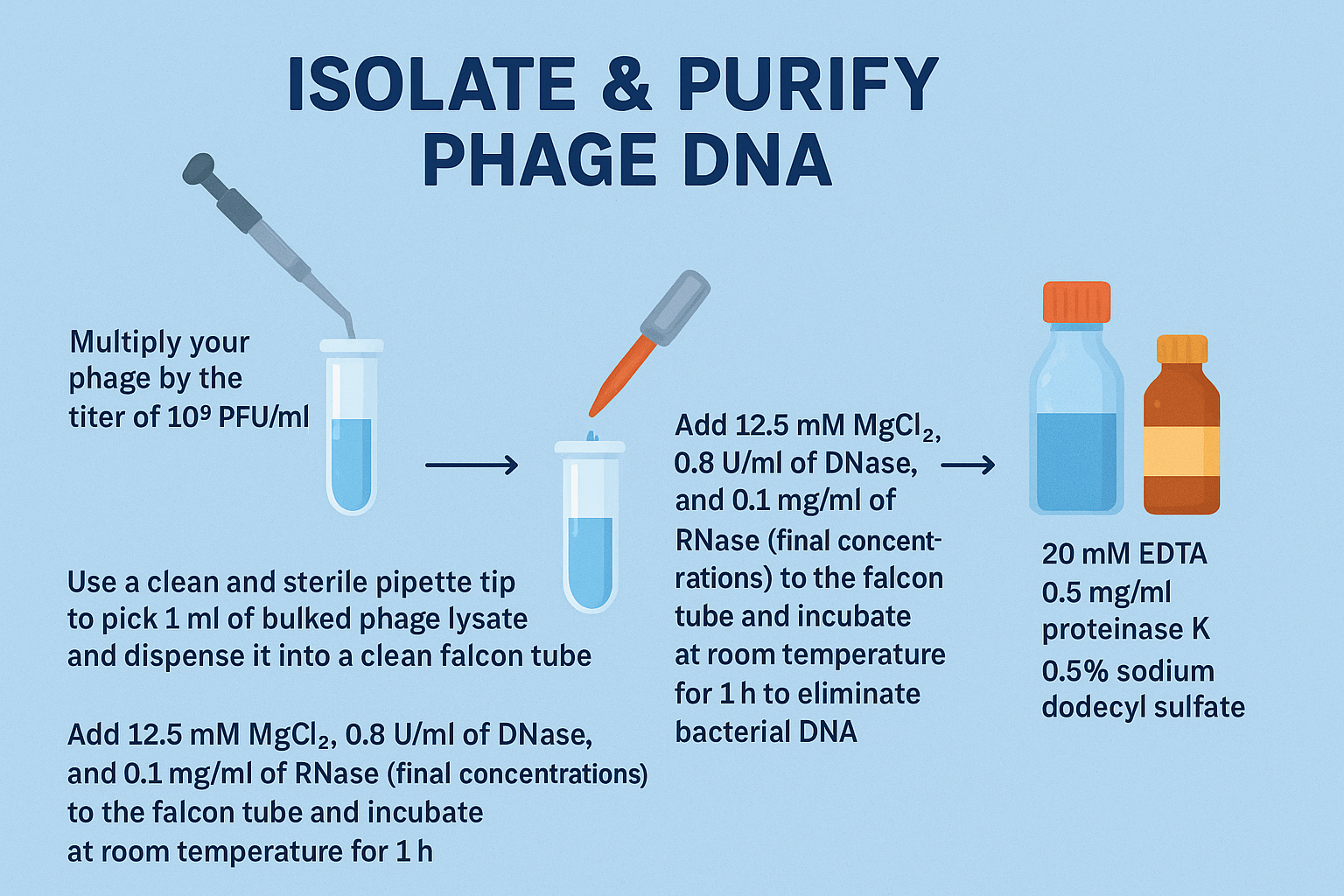Phosphate-buffered saline (abbreviated PBS) is a buffer solution commonly used in biological research including phage work. It is a water-based salt solution containing disodium hydrogen phosphate, sodium chloride, and, in some formulations, potassium chloride and potassium dihydrogen phosphate. The buffer helps to maintain a constant pH. It is commonly supplied as a tablet ready to dissolve to produce the desired concentration.
Content |
Concentration |
|---|---|
| Phosphate buffer | 10 mM |
| Sodium chloride | 137 mM |
| Potassium chloride | 2.7 mM |
| Distilled water | 100 mlPrey on gram-negative bacteria only |
Procedure
Dissolve one tablet in 100 ml of a 1X solution. 1X PBS solution contains10 mM phosphate buffer, 137 mM sodium chloride, and 2.7 mM potassium chloride. Each tablet prepares a 1X PBS solution when dissolved in 100 ml of distilled water H2O. Adjust the pH to 7.2 with HCl. Dispense the solution into aliquots and sterilize them by autoclaving for 20 min at 15 psi (1.05 kg/cm2) on a liquid cycle or by sterile filter membrane 0.45 lm units. Store PBS at roomtemperature.

Leave a Reply
You must be logged in to post a comment.